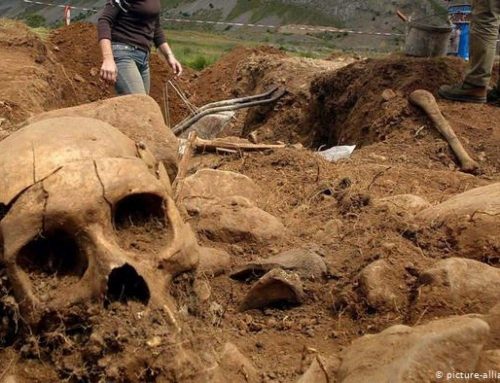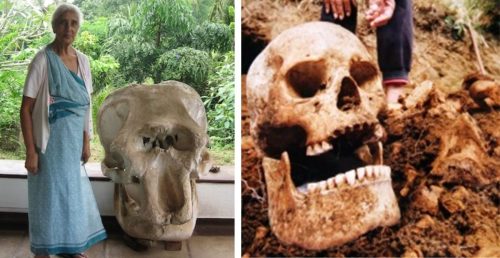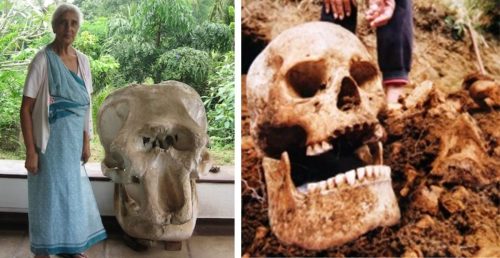
In the realm of archaeology and paleontology, few findings are as captivating and enigmatic as the unearthing of ancient human remains. Recently, a team of archaeologists in Sri Lanka made a discovery that has sent shockwaves through the scientific community—a massive skull dating back 37,000 years. This remarkable find has the potential to reshape our understanding of prehistoric humans and their presence in South Asia. In this article, we’ll delve into the intriguing details surrounding this enormous 37,000-year-old skull found in Sri Lanka.
Unearthing the Past
The discovery took place in the central highlands of Sri Lanka, an area known for its rich archaeological heritage. The skull, which is estimated to be over 10 feet in height, was found buried deep within a cave system. This astonishing find raises numerous questions and offers tantalizing clues about the ancient inhabitants of the region.

A Unique Specimen
The enormous size of the skull is a departure from what is typically found in the fossil record. Anthropologists are intrigued by its unprecedented dimensions, as it suggests the existence of a human species that may have been significantly larger than any previously known. Researchers are carefully studying the skull’s features, comparing them to existing human and hominid species to determine its classification.
Dating the Past
Radiocarbon dating of the surrounding cave sediments places the skull’s age at approximately 37,000 years. This makes it one of the oldest human remains ever discovered in South Asia. The dating process involved the analysis of organic materials found in the vicinity, shedding light on the time when this ancient giant roamed the landscape.
Theories and Speculations
The discovery has led to a flurry of theories and speculations within the scientific community. Some experts believe that the skull might belong to a previously unknown subspecies of Homo sapiens, while others speculate that it could be linked to a more ancient hominid species, such as Homo heidelbergensis. The sheer size of the skull raises questions about the lifestyle, diet, and social structure of these ancient beings.
Environmental Context
Understanding the environment in which this ancient giant lived is crucial to comprehending its existence. The central highlands of Sri Lanka have undergone significant changes over millennia. Studying the geological and climatic conditions of the region during the skull’s time is integral to piecing together the puzzle of its presence.
Cultural Significance
Beyond the scientific implications, this discovery has profound cultural significance for the people of Sri Lanka. It reinforces the idea that the island nation has a deep and rich history that stretches back tens of thousands of years. The finding has sparked local interest and pride, as it highlights Sri Lanka’s importance in the global tapestry of human history.

Future Research and Conservation
Archaeologists and anthropologists from around the world are flocking to Sri Lanka to assist in further excavations and research related to this incredible find. As they meticulously unearth and analyze additional remains and artifacts from the cave, they hope to gain a clearer understanding of the ancient giant’s way of life, potential interactions with other species, and how it fits into the broader human evolutionary tree.
Conclusion
The discovery of the enormous 37,000-year-old skull in Sri Lanka is a testament to the ever-evolving nature of scientific knowledge. As researchers continue to investigate this remarkable find, we can expect to uncover more about the mysteries of our ancient past and the diverse range of human species that once inhabited our planet. This astonishing skull stands as a testament to the importance of exploration, discovery, and the unyielding quest to unravel the secrets of our prehistoric ancestors.






